VIDEOS

Thorn EMI/HBO Video, who’d previously enjoyed success with Romero’s Dawn of the Dead two years before issued the VHS (TVA3395) and BETA (TXB3395) June 25, 1986, both in white clamshell cases. A commercial version in a brighter-colored small box with same art and text arrived in June 1987 from HBO/Cannon Video and again in 1989 from HBO Video/Weintraub Entertainment Group (VHS3395). This version had the same text/art again but with darker colors and no stills on the back.
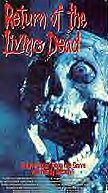
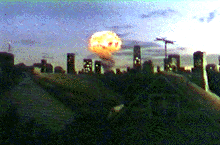
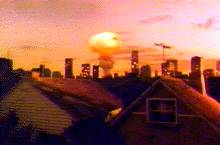
Two years later, short-lived Hemdale Video rushed an inferior EP-recorded copy (7003) with the jaw-dropped graveyard skeleton for a cover. The Damned’s "Dead Beat Dance" is removed from this version and replaced with an unidentified heavy metal track. The skyline in the mushroom cloud scene is purple not orange as in the former prints (note the picture on the right). More bizarre is the removal of producer Tom Fox’s name from the front box credits (replaced by Antony I. Ginnane, who made the Australian horror film Razorback).
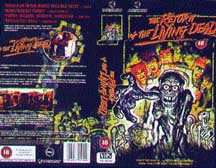
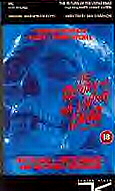
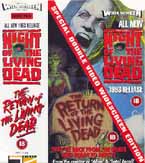

Vestron Video International’s U.K. PAL VHS (VA-15154) featured a painting of comical punkers and skeleton. Tartan Video (TVT-001) utilized the graveyard skeleton for their widescreen VHS based off their PAL laserdisc. A year later they threw it in a double pack with Night of the Living Dead remake (TVT-1155) and then reissued it in a design based off the US poster art. In these British transfers, the background music is mixed in lower allowing more clearer dialogue. In the scene where the Colonel comes back home, we hear "Fur Elise" very faintly and then a different classical piece in the dining room scene.
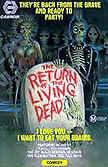
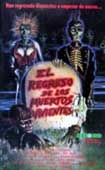
Most other countries followed
their native poster art: Germany (VPP), Spain (Record Vision), Italy (Titanus
Video), Australia (Cannon ZE7-126) – later re-issued by Warner Brothers
(38684) in 1992.
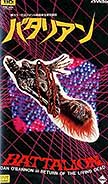
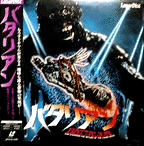
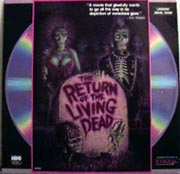
The Victor company was licensed Japanese VHS and VHD rights ( KHFV-1001) and (ODG-1095), which hit the streets July 5, 1986 with their ever-present half lady on grid scheme, much like the LP, but with a yellow logo. The Japanese were first to introduce a ROTLD laserdisc (Pioneer SF078-1081) on June 25, 1986. The audio was analog/mono, the picture subtitled with 11 chapter stops and a cover a sharper and more colorful rendition of the Style A collage. The Japanese version differs only in a black screen reading "Battalion" before the disclaimer of the film being based on real events. Originally 7800 yen ($77 US) these discs were highly sought after in America, until Image Entertainment unveiled their beautiful transfer (ID6851HB) in 1990. The sound was digital/mono this time, with chapter stops as well. Unfortunately Image decided to discontinue this title as well as several other horror films.
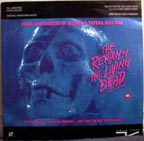
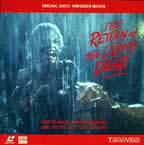
The United Kingdom released laserdiscs of their own in the PAL format. Tartan
Video’s (TVL001) disc arrived in 1992 shortly after the Image LD was deleted.
The selling point for Tartan was their widescreen transfer (a mediocre picture
made worse by unnecessary black bars superimposed on the screen). The jacket was
decidedly cheap with unclear vidcaps on the back. Presumably because it was only
30 minutes, Tartan made the second side of the gold platter CAV. As with the VHS
counterpart, two covers exist: one based off the quad, another with the
graveyard skeleton.
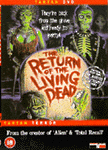
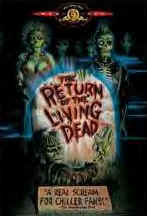
The United Kingdom has seen a
DVD release of the Vestron print, by Tartan Video (TVD3323). Rushed out March
19, 2001 for the region zero PAL DVD market, it included a 3-minute U.S.
trailer, and three filmographies (O’Bannon, Gulager and model shop supervisor
Michael Joyce). MGM’s multibox edition (1003675)
hit stores August 27, 2002 with a featurette on
creating the look of the zombies and running commentary by William Stout and Dan
O’Bannon. Other features include Tv spots, teaser and trailer. MGM skimped out
on adding more extras such as deleted scenes and even the booklet (there is
none). The back erroneously confuses the medical supply warehouse with 'an army
surplus store'. Basically it's the Hemdale print in much better quality, with
audio modifications at the insistence of the director. Full details can be found
here.
THE WORK PRINT
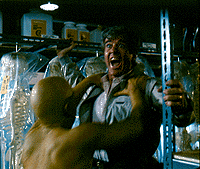
The hard to watch, 108 minute work print is still in circulation in black markets after leaking out of lab hands in fall 1984. It does not have title graphics (including the disclaimer). It does not have the slow motion technique found in the final cut. It has no music except for Vanity 6’s "Nasty Girl" in the stripdown scene. Sound effects are not added in yet so you will not hear things such as the split dog panting, cadaver banging in the cold locker, zombie cries for brains, sirens, windows smashed, Uneeda’s door buzzer, Suicide’s car rev, phone rings, etc. However, Ernie’s machinery is very loud in his embalming scene and was removed from the audio entirely in the final cut.
A noticeable feature throughout the work print is the fact that it is made up of entirely different takes than what made it to the final cut. Dialogue differs greatly in almost every scene. Even long-time fans may not notice immediately, but the tell-tale giveaway is when Frank relates the story of the VA Hospital leak to Freddy in the Uneeda office. Freddy admits that Night of the Living Dead was "one of the bestest movies there ever was" and Frank replies "you’re damn right!". Another such scene is when Burt calls Spider a "black bastard" (not scripted) instead of "dickbrain". Suicide has a few more lines; at one point he calls Casey a "chocolate face" instead of "ballbuster". When Burt is on the phone with the police in the barricade, the commander tells the men that "it’s rabies…get the medical examiner down here in a hurry."
The first dispatch (radio) corpse’s voice is different and not creepy at all (probably synthesized later to add that baritone). Another actress does the voice for the half lady (later redubbed by Cherry Davis’s voice). The voice here is very straightforward, with no trace of agony or pain unlike Davis’s.
Among the filmed scenes originally in the script then deleted from the final cut: Burt is seen leaving Uneeda from the inside, Frank shows Freddy gurneys, oxygen tanks (warning him not to smoke), Frank offers to buy Fred a soda after they see the cold locker, additional teenager dialogue on the sidewalk, a crypt full of beercans discovered by Scuz, Spider and Casey before the "way of life" scene with Suicide, more embalming processes (eye stapling) and a second check-up on Frank and Fred’s vital signs before the medics conclude the men are ‘technically not alive’.
Trash attacked by graveyard zombies is placed after Chuck and Casey ask where she went at Uneeda. There is more footage to Trash’s death as well.
Missing from the work print but shot later: Close up of Freddy straightening office desk after phone rings, the meltdown sequence (the viewer only sees a far away shot as the camera pulls away toward the vents), shot of the birds flying in the sky after Chuck turns on his radio to no sound (it’s a dusk sky instead), the burning in the crematory, the storm and lightning, cross-sections of the body underground, Tar Man close-ups, the hand reaching out of the ground, the paramedics shown being attacked (their deaths are ‘reveals’ in the work print), the half lady in the rain attacking Scuz, Trash attacking the transient, officers discovering a medic’s brain-oozing bodies, Ernie locking the chapel, Burt/Spider’s yelling inside the police car, the voice of the police helicopter unit, head coming off a zombie (Tony Gardner), Trash attacking the commander, Denver (computer graphic). The shot of Glover talking on the phone in front of his console had to be inserted later since they could not go back to the mansion used earlier. They simply made the mortuary up to be the mansion’s living room. Note the grandfather clock, seen in the mortuary, also in the background.
Storyboards fill in the place where the vapors are exiting the crematory smokestacks and where the rain is supposed to be seeping down into the graveyard soil in a cross-section.
There is more to see. The teens enter the cemetery and Spider proceeds to make wolf howls. There’s more footage for the scene of the legless corpse Ernie meets, Tina’s encounter with Tar Man, extended graveyard rising, the transient collecting refuse then pushing the cart, the second dispatch zombie picking up the radio and Freddy chasing Tina in the chapel (the insert of his foaming mouth was edited out of this first encounter and used later when the men arrive to save her). Frank even tries to grab her as she runs past and Tina even throws a chair at Freddy. O’Bannon made this whole scene shorter but still intense for his final cut. Frank also runs down the hallway, and later we see him in the corner of the crematorium room, crying, before he does himself in. This precedes Burt/Spider’s getaway, but was spliced in after they reach Uneeda in the final cut. Just before this, Ernie had told Tina that Frank and Freddy went to heaven and that its just dead bodies that want to eat our brains. While hiding in the attic with Tina, Ernie pulls out several things to potentially hold off Freddy if he did bust through. When he does, the scene is not freeze-frame. Fred says "Tina!!" but it does the echo had not been added. Neither is the scene of the zombies standing looking up to the sky as the missile is about to land. There is some different stock footage. The narrative is the same as in the original script. The bookending device of re-using the scenes from earlier is replaced by a shot of railroad cars in South Dakota – shot on the same day and place as the missile launch.